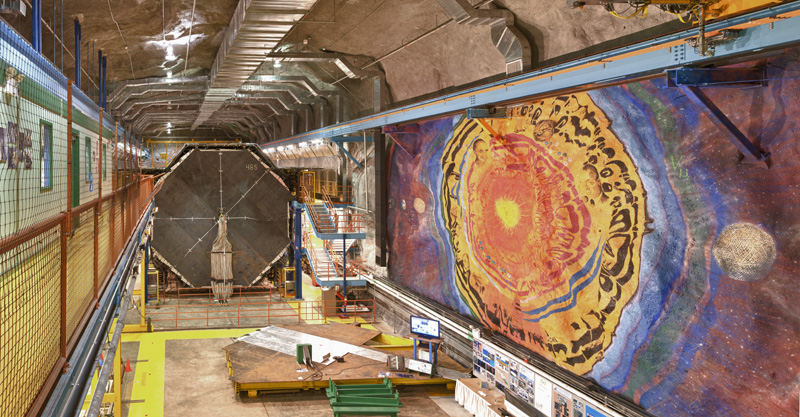Scientists at Brookhaven National Laboratory developed a software toolkit that reconstructs and isolates neutrino data in 3D. This software directly enabled the long-awaited findings from the MicroBooNE experiment released today by Fermilab in four complementary analyses. The Wire-Cell team at Brookhaven Lab led one of the four analyses—the most sensitive analysis of the electron-neutrino interaction. Some components of the Wire-Cell toolkit were also used in the other three analyses.
Tag: sterile neutrino
MicroBooNE experiment’s first results show no hint of a sterile neutrino
For more than a decade, scientists have wondered whether a theorized new particle, a fourth kind of neutrino called the sterile neutrino, might exist in our universe. Evidence of this would add a new particle to the physicists’ best theory, the Standard Model of Particle Physics. A new particle would be a radical shift in our understanding of the basic building blocks of the universe. MicroBooNE’s four new experimental results all show the same thing: no sign of the sterile neutrino. Instead, the results align with the Standard Model of Particle Physics. With sterile neutrinos further disfavored as the explanation for anomalies spotted in neutrino data, scientists are investigating other possibilities. Unexplained data point toward promising research areas and lead us to more fundamental truths about how physics works at the smallest level.
ICARUS gets ready to fly
The ICARUS detector, part of Fermilab’s Short-Baseline Neutrino Program, will officially start its hunt for elusive sterile neutrinos this fall. The international collaboration led by Nobel laureate Carlo Rubbia successfully brought the detector online and is now collecting test data and making final improvements.

A team of international physicists join forces in hunt for sterile neutrinos
The MINOS+ and Daya Bay neutrino experiments combine results to produce most stringent test yet for the existence of sterile neutrinos.